This step by step diy woodworking project is about how to build an attached pergola. If you want to learn how to build an attached pergola, we recommend you to pay attention to the instructions described in the article and to check out the related projects. There are many shed projects featured on our site, so don’t be afraid to browse through the rest of the woodworking plans.
In most of the cases, a building permit is required so make sure you go to the town hall and ask information about the legal requirements you have to comply with. In this manner, you will also find out useful details about your shed construction. When building the shed, you should make sure the plans are detailed and come with step by step instructions, as well as with a complete list of the materials.
It is essential to invest in high quality materials, that are also water-resistant, such as pressure-treated lumber. Cut the components at the right size by using a circular saw and smooth the cut edges with a sand block. Don’t forget to ask a skilled friend to assist you during the project, especially if you don’t have a large expertise in the field. You need someone to hold the components into place, while you drive the screws in. See all my Premium Plans in the Shop.
Made from this plan
Attached pergola plans

Building an attached pergola
Materials
- A – 2 pieces of 6×6 lumber – 116 1/4″ long, 3 pieces – 108 1/2″ long POSTS
- B – 3 pieces of 2×8 lumber – 228″ long SUPPORT BEAMS
- C – 13 piece of 2×8 lumber – 120″ long SHADE ELEMENTS
- D – 30 piece of 1×4 lumber – 17 1/2″ long SPACERS
- E – 20 pieces of 1×10 lumber – 20 1/2″ long TRIMS
- 5 pieces of 6×6 lumber – 10 ft
- 3 pieces of 2×8 lumber – 20 ft
- 18 pieces of 2×8 lumber – 10 ft
- 6 pieces of 1×4 lumber – 8 ft
- 5 pieces if 1×10 lumber – 8 ft
- 1 5/8″ screws
- 5 post anchors
- rafter ties
- 6″ carriage bolt
- wood filler , wood glue, stain/paint
- post to beam connectors
- 1 1/2″ structural nails
Tools
- Safety gloves, glasses
- Miter saw, jigsaw
- Chalk line, tape measure, spirit level, carpentry pencil
- Drill machinery and drill bits
Tips
- Use a good miter saw to make the angle cuts
- Drill pilot holes before inserting the screws
Time
- One Week
Related
Building an attached pergola
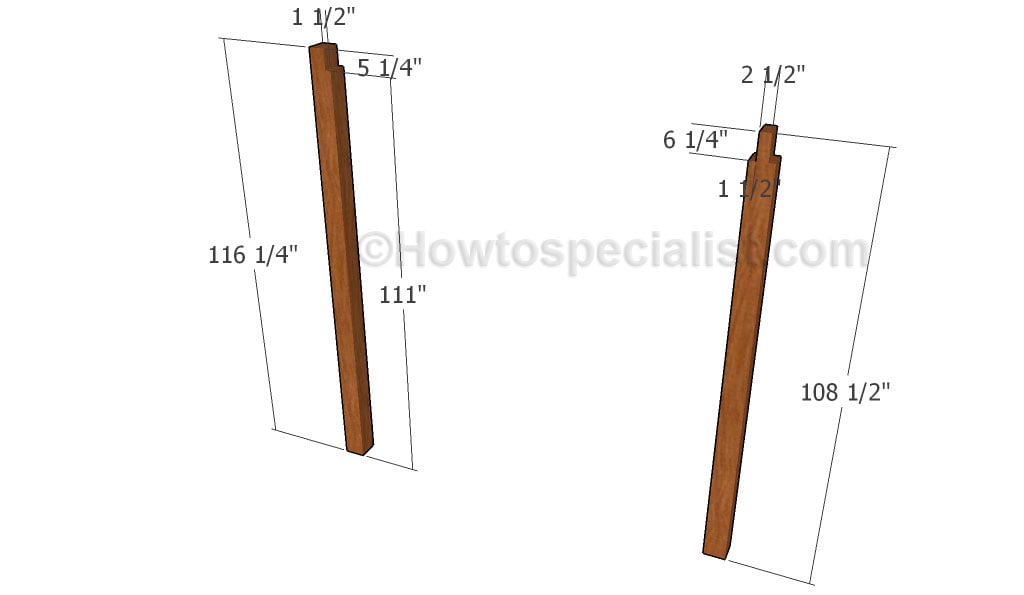
Building the posts
The first step of the woodworking project is to build the posts for the pergola. As you can easily notice in the diagram, we recommend you to use 6×6 lumber for the posts. Mark the cut lines on the posts and make the notches with a circular saw. Clean the recess with a chisel and smooth the surface with fine-grit sandpaper. Take accurate measurements for a professional result.
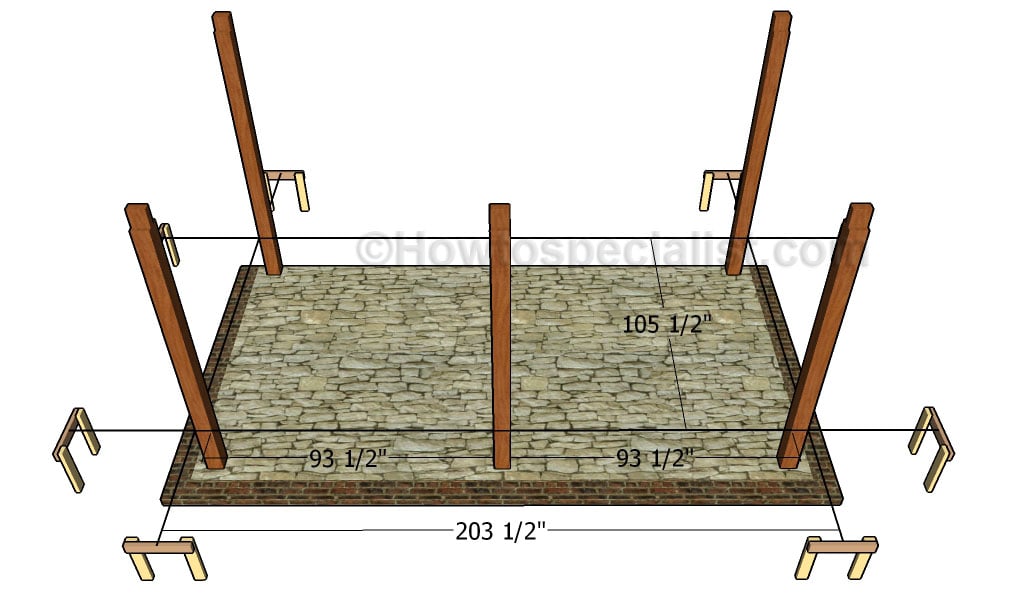
Laying out the pergola
Laying out the pergola is an essential step of the outdoor woodworking project. In order to get a professional result, we recommend you to use batter boards and string. Adjust the size of the pergola according to your needs, but use the woodworking techniques described in order to get a professional result. Make sure the diagonals are equal and apply the 3-4-5 rule to every corner of the pergola to make sure they are right-angled.
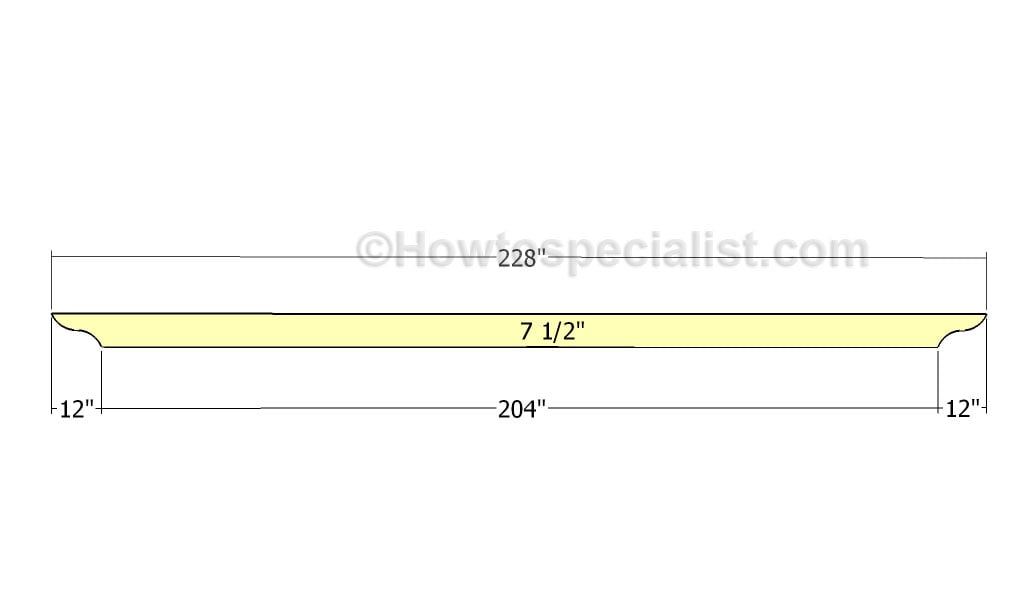
Building the support beams
Build the support beams out of 2×8 lumber. If you want to add character to the project, we recommend you to cut the ends of the beams in a decorative manner. Use a jigsaw to make the curved cuts and smooth the edges with fine-grit sandpaper for a professional result.
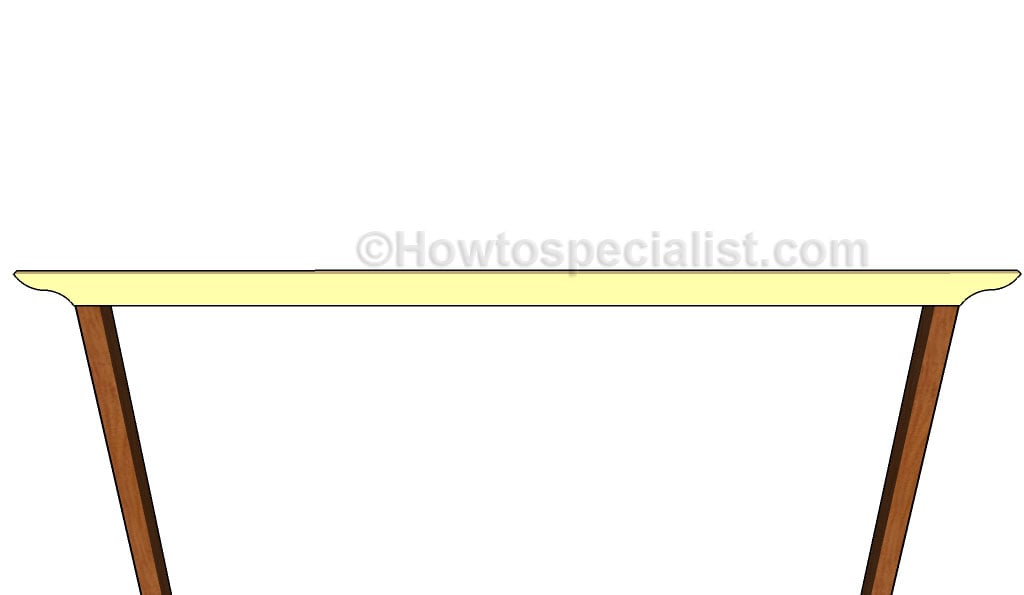
Fitting the support back beam
Attach the support beam to the back posts and secure it into place by using 3 1/2″ screws. Make sure the support beams is perfectly horizontal before inserting the screws. Alternatively, you could attach the support beams directly to the house structure and lock it into place using lag screws.
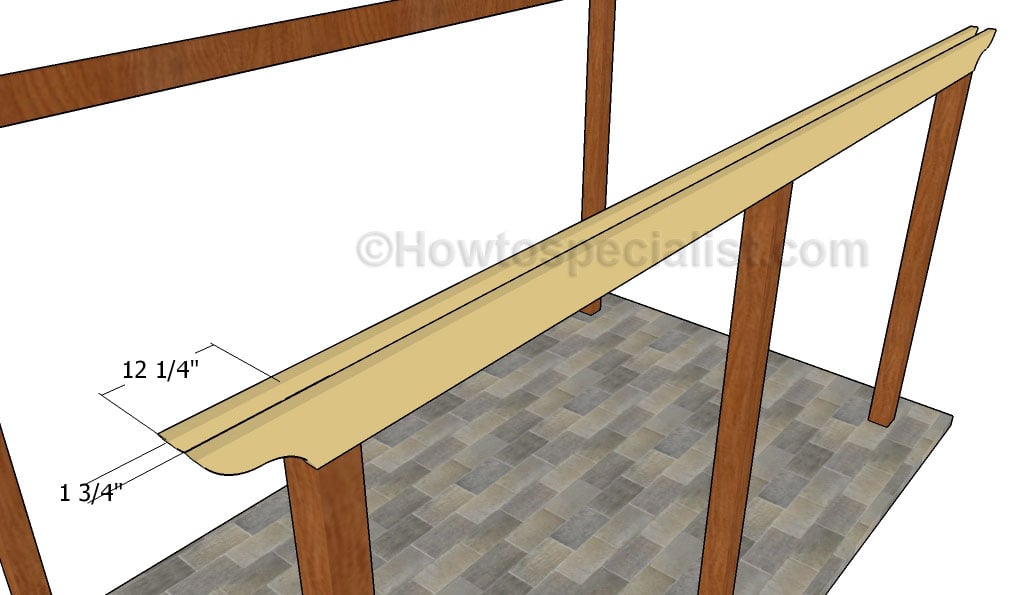
Fitting the support beams
Fit the support beams to the front posts and drill pilot holes through all the components. Afterwards, insert 6″ screws to lock the beams into place tightly. Work with attention and double check the rigidity of the structure before continuing the project.
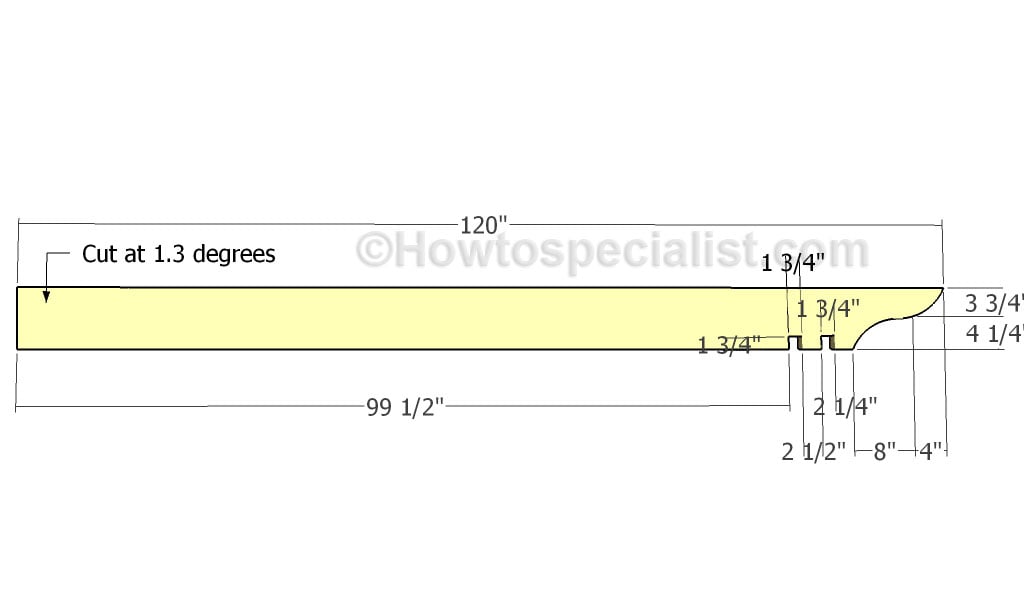
Building the shade elements
Build the shade elements for the attached pergola out of 2×8 beams. Cut the back edge at 1.3 degrees and make the notches to the front of the component, in order to lock tightly to the support beams.
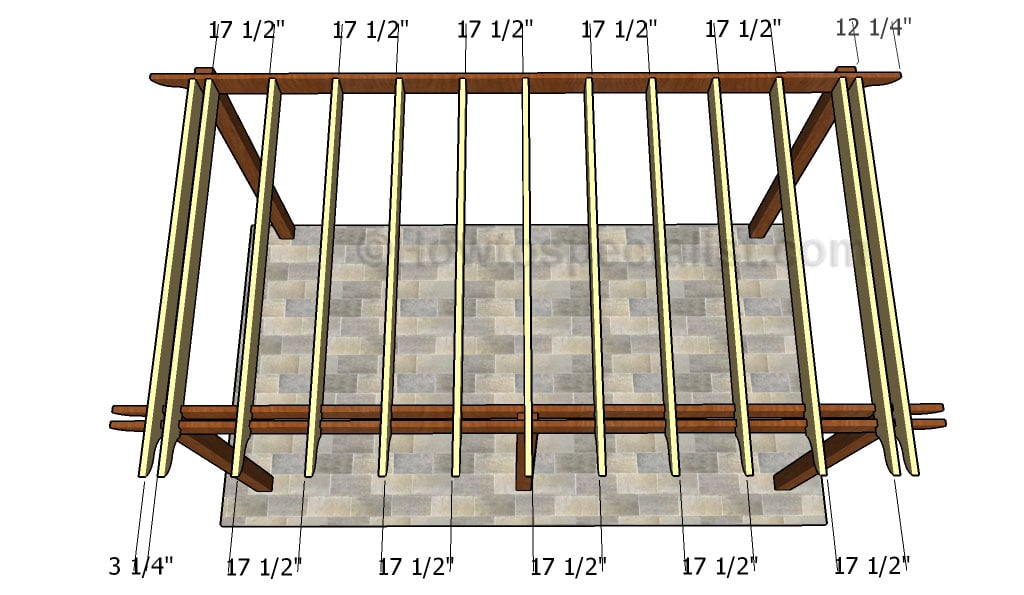
Fitting the shade elements
Fit the shade elements to the structure and space them according to your needs and tastes. The closer you will place the shade elements, the more shade you will have under the pergola.
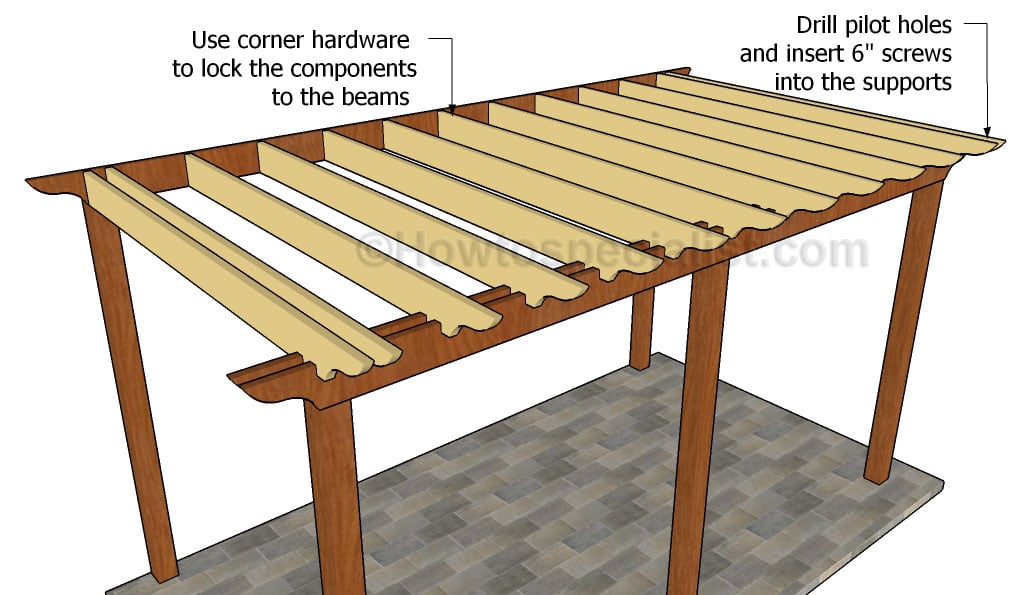
Installing the shade elements
Use metal hardware to lock the shade elements to the back support beam. Drill pilot holes through the front of the components and lock them to the supports slats by driving in a few 6″ screws.
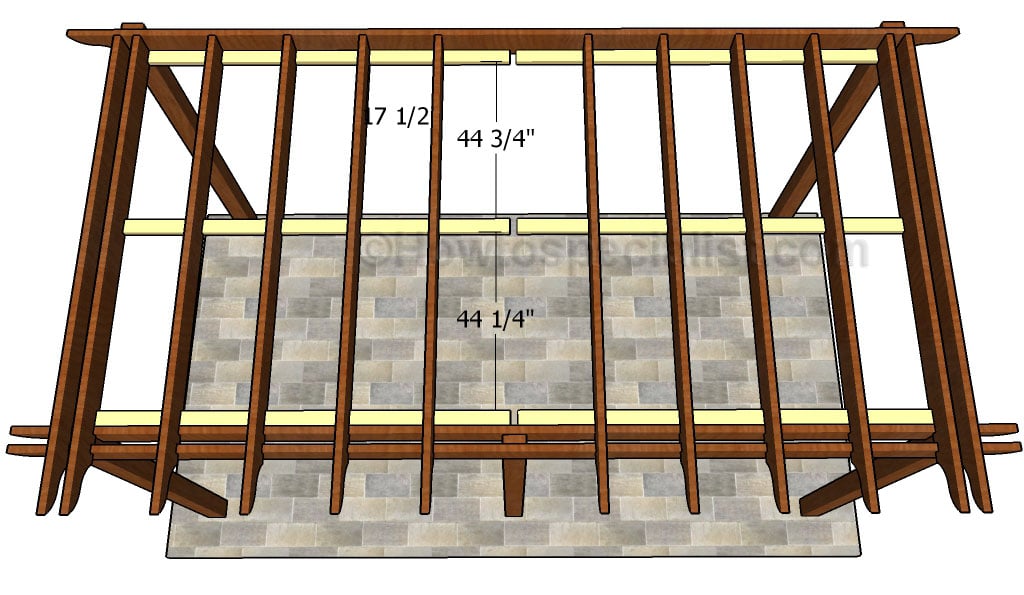
Fitting the spacers
Fit 1×4 spacers between the shade elements in order to enhance the rigidity of the structure. Drill pocket holes at both ends of the spacers and secure them to the shade elements using 1 1/4″ screws.
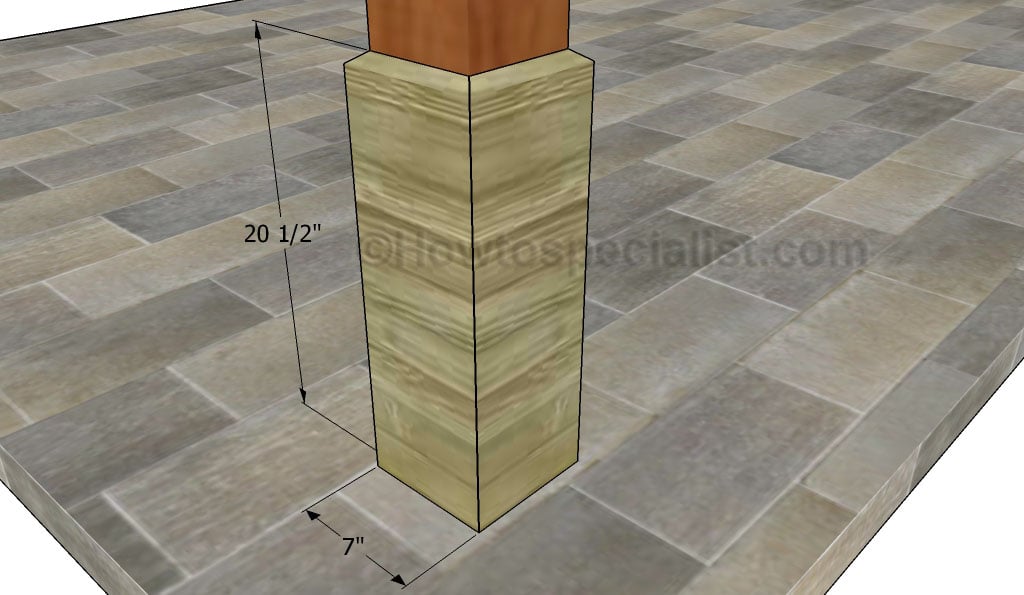
Fitting the post trims
If you want to enhance the look of the pergola, we recommend you to attach 1×8 trims to the bottom of the posts. Therefore, cut the trims at the right size and smooth the edges with fine-grit sandpaper. Use a circular saw to cut the side edges at 45 degrees and secure them to the posts by using finishing nails and glue. Leave no gaps between the components for a professional result.
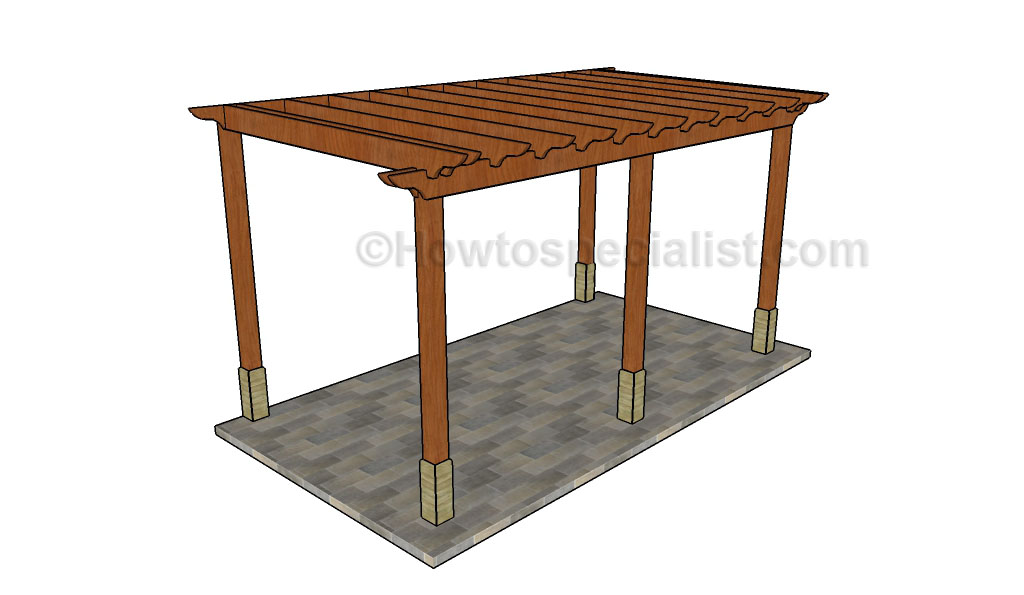
Attached pergola plans
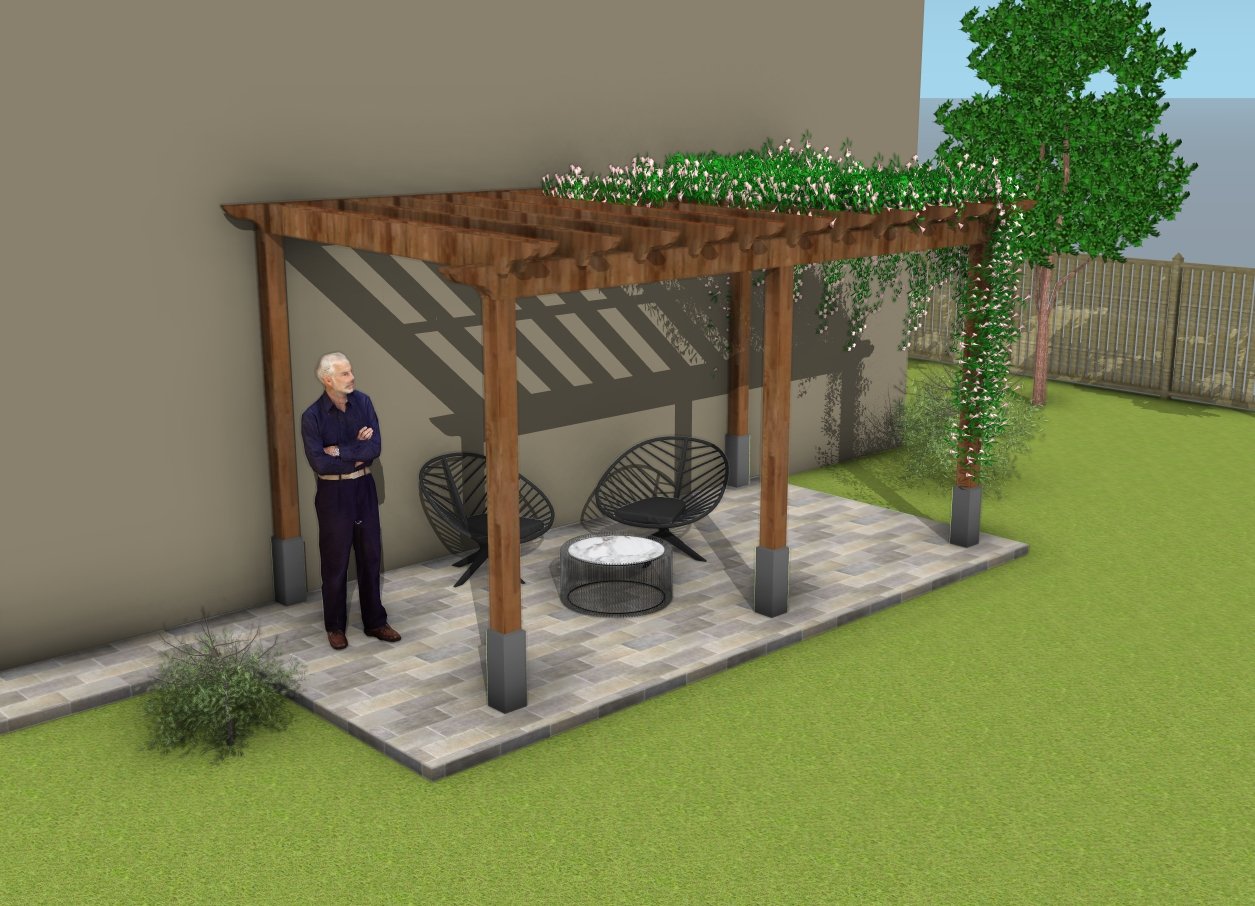
How to build an attached pergola
Building an attached pergola is a fantastic way to elevate your outdoor living space with style and function! By attaching it directly to your home, you create a seamless, shaded extension that’s perfect for relaxing, dining, or entertaining. Not only does it provide welcome relief from the sun, but it also adds visual interest and value to your property.
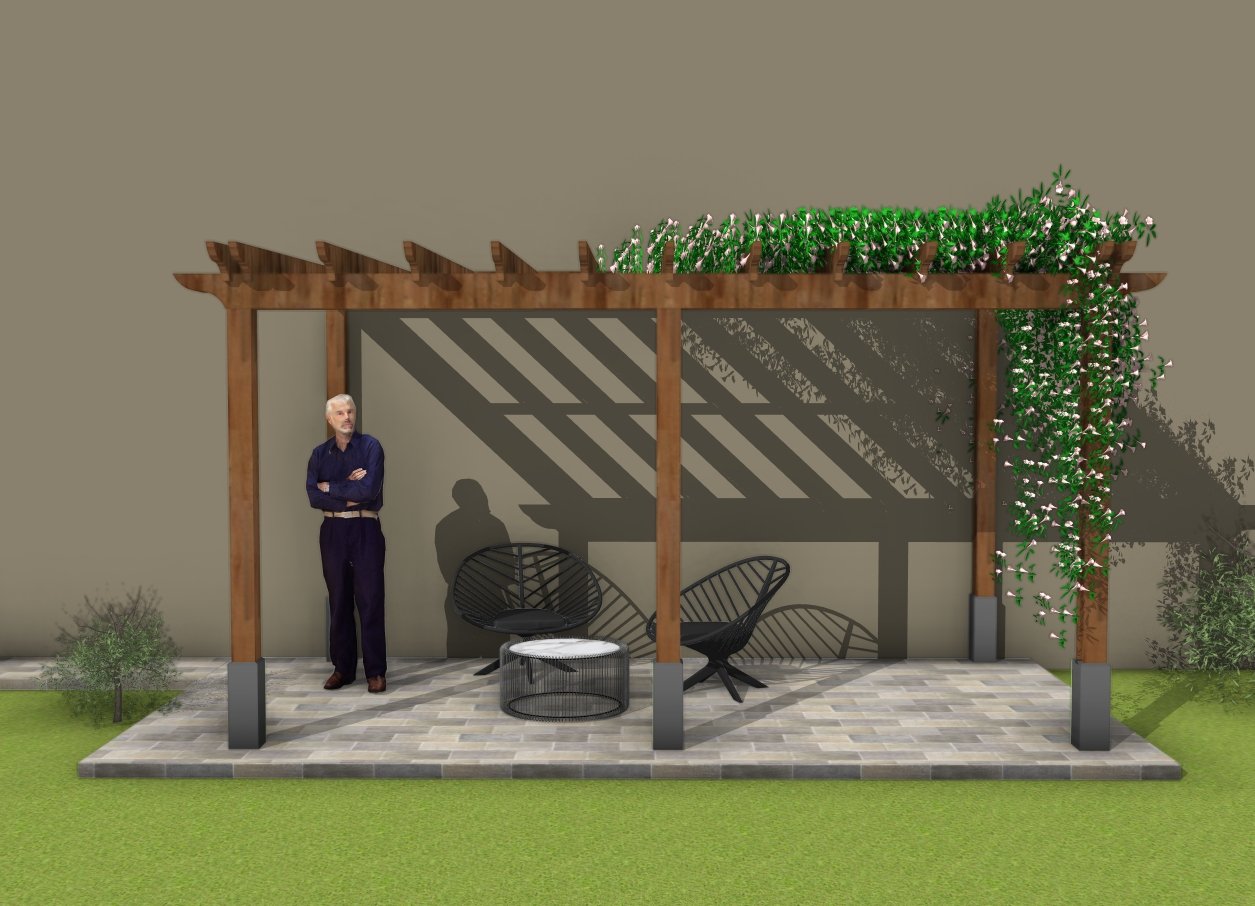
How to make an attached pergola
An attached pergola can even help reduce indoor cooling costs by shading windows and doors. With its simple structure, it’s a DIY-friendly project that lets you customize with lights, plants, or outdoor curtains to make it truly yours. It’s the perfect blend of beauty, comfort, and practicality for your backyard!
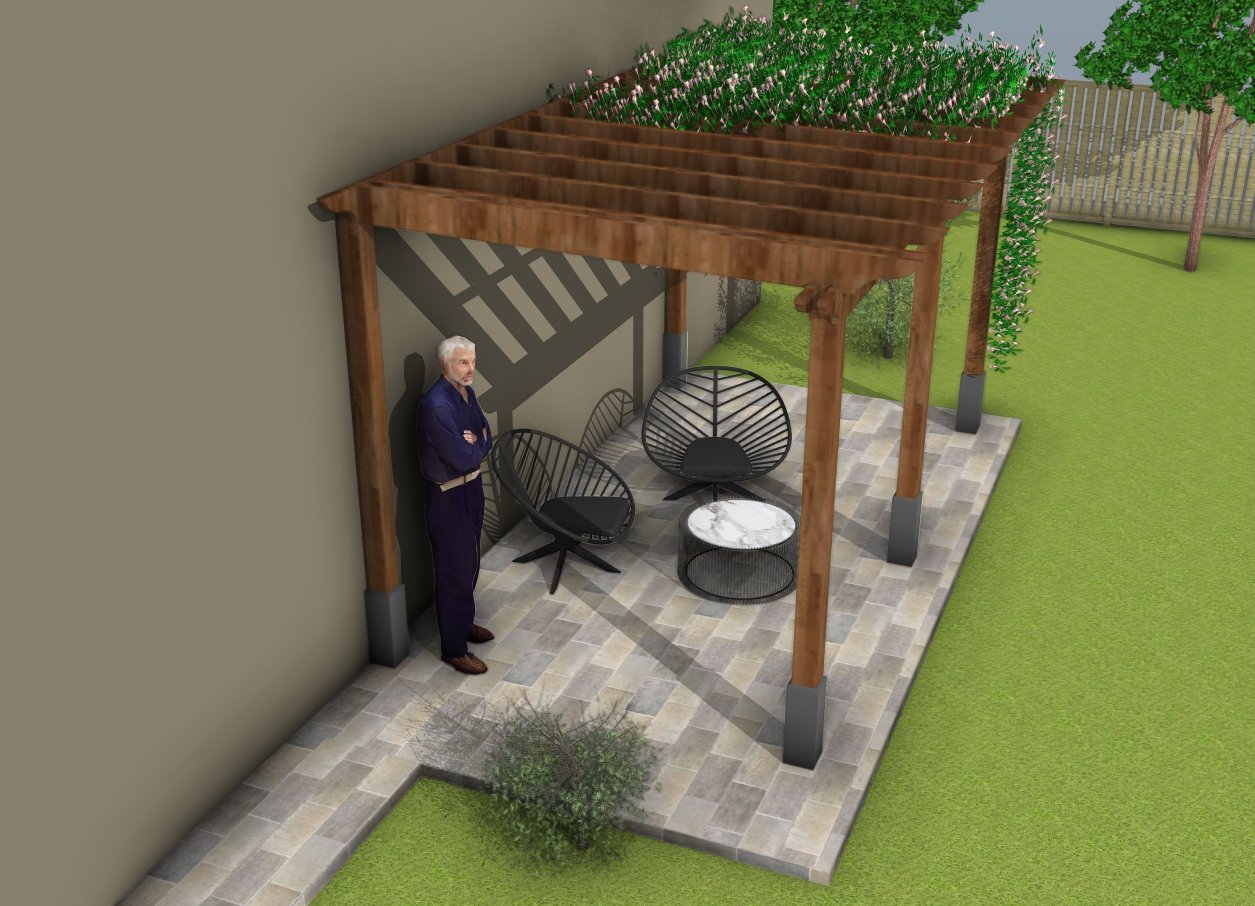
DIY Attached pergola plans
Last but not least, we recommend you to take care of the finishing touches. Fill the holes with wood filler and let it to dry out for several hours. Don’t forget to check out the rest of the pergola plans, as there are several alternatives to choose from.
Thank you for reading our project about how to build an attached pergola and we recommend you to check out the rest of the projects. Don’t forget to share our projects with your friends and LIKE us, by using the social media widgets. SUBSCRIBE if you want to be the first that gets our latest articles.

